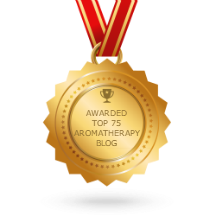There has been some online discussion recently about what does or does not constitute a true aromatherapy hydrosol/hydrolate. We have even seen the suggestion that one could somehow combine an essential oil and distilled water and produce your own hydrosol, without the trouble of distillation, fresh or dried botanicals, etc.
Ann Harman, master distiller and author of From Harvest to Hydrosol was kind enough to address the issue as a guest blogger.
 |
| Courtesy of Ann Harman |
Hydrosol – Why so much confusion?
The term hydrosol means different things to different people. If you ask a scientist to define a hydrosol he would most likely say something like “an aqueous solution”, such as salt dissolved in water. In chemistry, the term hydrosol refers to any solution where a liquid, solid, or gas is dispersed in water. In aromatherapy, the term hydrosol refers to the aqueous product of distillation; the term hydrosol may be defined as “the aqueous distillate resulting from a distillation from plant material.”
The key words in this definition are distillation and plant material. You can’t make an aromatherapy hydrosol without the act of distillation. The aromatherapy hydrosol carries a very small percentage of volatiles (essential oil) in suspension. This volatile percentage is less than 0.1% of the hydrosol. The other 99.9% is still up for debate as very few analyses have been done on the non-volatiles. In theory the hydrosol would contain the water soluble plant acids and other soluble components of the plant.
Our modern day terms for these distillate waters are hydrosol or hydrolat (hydrolait, hydrolate. In Germany they are referred to as pflanzenwasser. In the early 1990s, Jeanne Rose coined the term hydrosol to name the first portion of distillate from the steam distillation of plants. The term literally means water solution—from hydro meaning water, and sol meaning solution. It is the term most often used in the United States to describe the distillate waters.
Throughout history, distillate waters have been given numerous names. In the sixteenth century, they were simply called “the water of _____,” as in the Water of Plantain, or the Water of Rose. Latin terms were also used to describe a distillate; for example, Aqua Sambuci describes the distillate water (Aqua) of the Elderflower (Sambuci from its genus Sambucus). The term Oleum Sambuci referred to the essential oil of the Elder.
Ancient distillates were referred to as floral or herbal waters, depending on the type of plants distilled. Distillates were made from many medicinal herbs, both aromatic and non-aromatic plants). Aquarom was a term used in the early 1980s by Dr. Gumbel, author of Principles of Holistic Therapy with Herbal Essences, to describe the aromatic waters of distillation. The term floral water is sometimes still used today, but now usually refers to a mist made from distilled water, essential oils, and an emulsifier. Though this may technically be a hydrosol by chemistry definition, it is not a hydrosol by aromatherapy standards.
If you want to use hydrosols therapeutically in your practice you should familiarize yourself with the terms associated with the distillate waters and learn how to read through marketing hype. Use the same standards you would when searching for quality essential oil; buy from reputable suppliers that sell to the aromatherapy market – not soap or cosmetic suppliers. Know what you are buying and know how to differentiate between the different products on the market.
My comment: Nature's Gift is delighted to offer some of Ann's true hydrosols, as well as those produced by other artisan distillers. You may see our full range here. I guarantee that none are produced by combining essential oils and water!


No comments:
Post a Comment